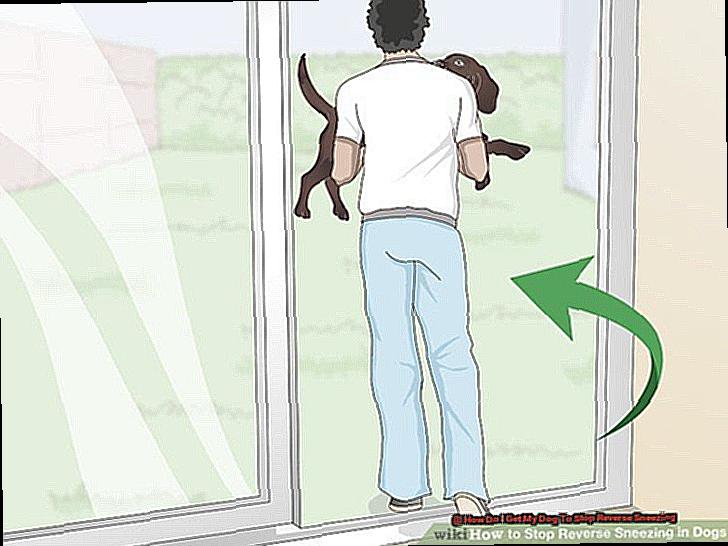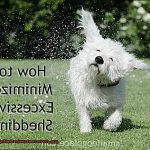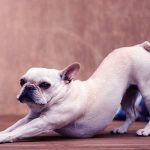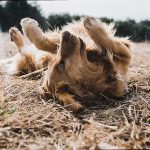How Do I Get My Dog To Stop Reverse Sneezing?
Picture this: you’re sitting on the couch, enjoying a quiet evening with your beloved pup by your side.
Suddenly, out of nowhere, they start making strange snorting and gasping noises that leave you feeling panicked and confused. If this sounds familiar, then you’ve likely witnessed your dog experiencing a reverse sneezing episode.
While it may seem scary at first, rest assured that it’s a common occurrence in dogs and can be easily managed. In this blog post, we’ll delve into the world of reverse sneezing and provide you with all the information and tools you need to help your furry friend through it.
So let’s get started.
How Do I Get My Dog To Stop Reverse Sneezing?
Contents
- 1 How Do I Get My Dog To Stop Reverse Sneezing?
- 2 Common Triggers for Reverse Sneezing
- 3 Breeds Prone to Reverse Sneezing
- 4 How to Recognize a Reverse Sneeze
- 5 Tips for Stopping Reverse Sneezing Episodes
- 6 Natural Remedies for Preventing Reverse Sneezing
- 7 When to Seek Veterinary Help for Reverse Sneezing
- 8 Conclusion
As a French Bulldog owner, you may have experienced your furry friend suddenly snorting or making loud snuffling sounds, which can be quite alarming. This occurrence is known as reverse sneezing, and while it may sound serious, it is usually harmless.
However, it can be uncomfortable for both the dog and the owner. In this guide, we will explore what causes reverse sneezing in French Bulldogs and provide tips on how to soothe your dog during an episode and prevent it from happening frequently.
What is reverse sneezing?
Reverse sneezing is a reflex action that causes dogs to inhale air rapidly, resulting in a loud snorting or snuffling sound. It is more common in small breeds like French Bulldogs due to their short noses and flat faces. This structure can make it challenging for them to take in enough air through their nostrils, leading to reverse sneezing.
What causes reverse sneezing?
There are various factors that can trigger reverse sneezing in dogs, including allergies, irritants in the air, excitement, or eating or drinking too quickly. It can also be a sign of an underlying health issue, so it is essential to observe your dog’s behavior and consult with a veterinarian if you notice any other symptoms or changes in their health.
How to soothe your dog during a reverse sneezing episode?
The first step in addressing reverse sneezing is to try to soothe your dog during an episode. This can include gently massaging their throat or covering their nostrils with your fingers for a few seconds until they swallow and breathe normally again. You can also try calming them down by speaking softly and distracting them with treats or toys. These methods can help your dog relax and stop the reverse sneezing episode sooner.
Preventive measures for reducing the frequency of reverse sneezing
While reverse sneezing is generally harmless, it can be uncomfortable for your dog. Therefore, taking preventive measures can help reduce the frequency of episodes. If allergies are the cause, try to identify and avoid the allergens that trigger your dog’s episodes. You can also consider using an air purifier in your home to improve air quality and reduce potential triggers.
Common Triggers for Reverse Sneezing
As a French Bulldog owner, you may have experienced your furry friend suddenly making a snorting or gagging sound, leaving you feeling concerned and unsure of what’s happening. This behavior is known as reverse sneezing, and while it may seem scary, it is a common and harmless condition in dogs. In this blog post, we will discuss common triggers for reverse sneezing in French Bulldogs and provide tips to help prevent or minimize episodes.
Allergies – A Common Culprit
Just like humans, dogs can be allergic to various environmental factors, such as pollen, dust, mold, or certain types of food. These allergies can irritate the nasal passages and trigger a reverse sneeze. French Bulldogs are particularly prone to allergies due to their short snouts and sensitive respiratory systems. If you notice that your Frenchie’s reverse sneezing episodes occur more frequently during specific times of the year or after eating certain foods, it may be due to allergies.
Excitement and Overstimulation
French Bulldogs are known for their playful and energetic nature. However, this high energy level can sometimes lead to overstimulation, causing them to inhale rapidly and trigger a reverse sneeze. This is especially common when playing with their favorite toys or meeting new people. If you notice that your Frenchie tends to reverse sneeze during these activities, it may be helpful to take breaks and allow them to calm down before resuming play.
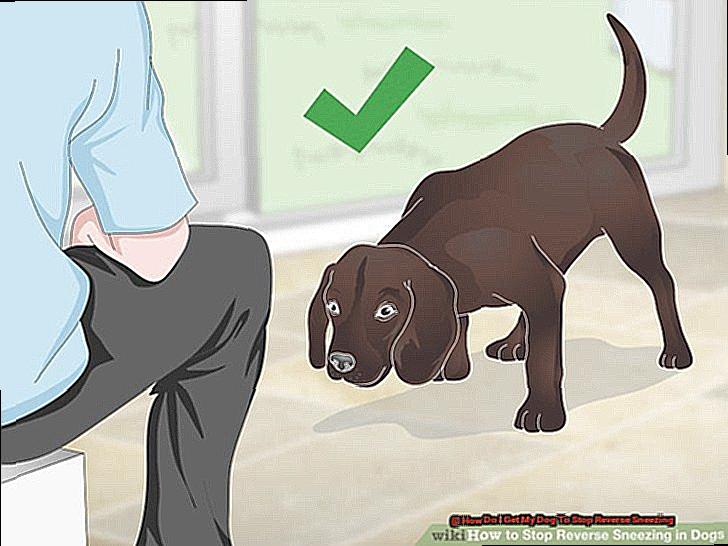
Foreign Objects in the Nose
French Bulldogs have short snouts and are more prone to getting foreign objects stuck in their noses while sniffing around. These objects can irritate the nasal passages and trigger a reverse sneeze. If you suspect that your dog may have something lodged in their nose, it’s important to seek veterinary attention immediately. Do not attempt to remove the object yourself, as it can cause further harm.
Environmental Irritants
Just like allergies, environmental irritants such as cigarette smoke, air fresheners, or strong perfumes can also trigger a reverse sneeze in French Bulldogs. These irritants can cause inflammation and irritation in the nasal passages, leading to a reverse sneezing episode. It’s important to keep your Frenchie away from these irritants and provide them with a well-ventilated and clean environment.
Breeds Prone to Reverse Sneezing
As a French Bulldog owner, it is important to know about the health issues that your beloved pet may be prone to. One of the most common conditions in this breed is reverse sneezing, also known as pharyngeal gag reflex. This is a sudden and alarming episode where your dog makes snorting or gagging sounds while rapidly inhaling through their nose.
While reverse sneezing can occur in any dog, it is more prevalent in brachycephalic breeds like French Bulldogs. In this section, we will delve deeper into why French Bulldogs are more susceptible to reverse sneezing and how you can effectively manage this condition.
The Anatomy of a French Bulldog’s Nose
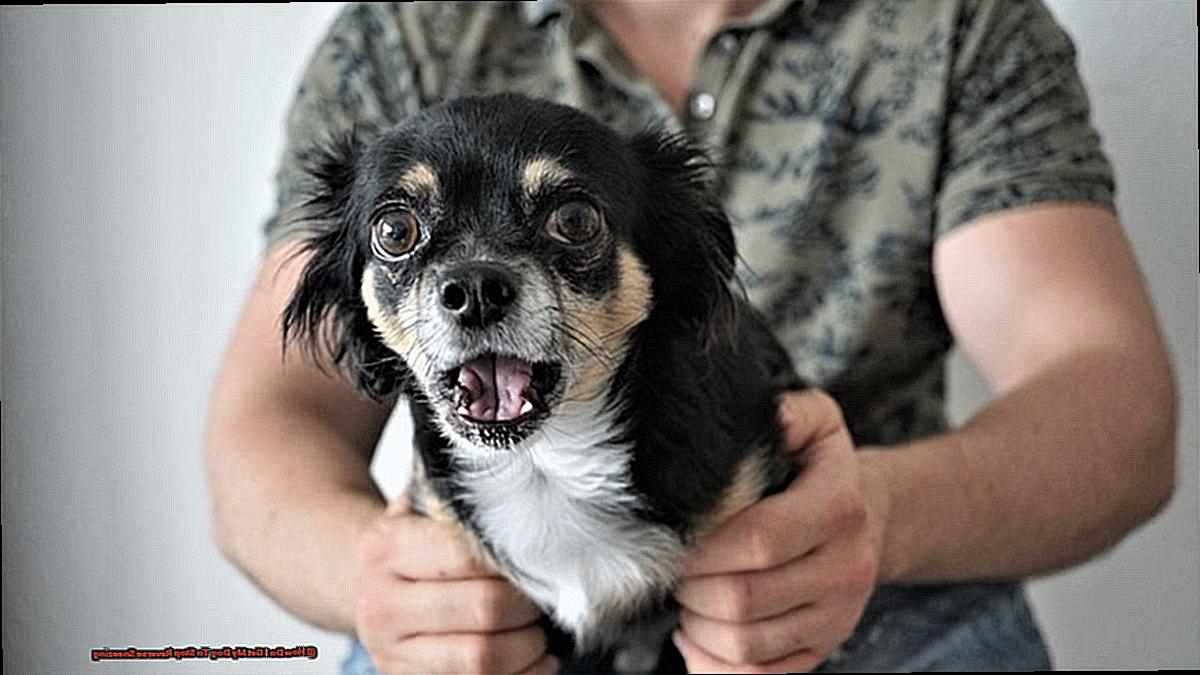
French Bulldogs have a unique appearance with their flat faces and short snouts, which contributes to their adorable charm. However, this also means that they have a narrower nasal passage and elongated soft palate, making it harder for them to breathe properly. This anatomical structure restricts the airflow, making it difficult for them to clear their airways efficiently. As a result, they are more prone to experiencing episodes of reverse sneezing.
Possible Triggers for Reverse Sneezing in French Bulldogs
While the anatomical structure of a French Bulldog’s nose plays a significant role in their susceptibility to reverse sneezing, there are other factors that may trigger these episodes as well. These include allergies, irritants in the air such as dust or pollen, excitement or stress, or even eating or drinking too quickly. Knowing the possible triggers for your dog’s reverse sneezing can help you find the most effective solution.
Effective Management Techniques for Reverse Sneezing in French Bulldogs
Reverse sneezing may look and sound alarming, but it is usually harmless and can be easily resolved. Here are some effective management techniques that can help your French Bulldog during an episode of reverse sneezing:
- Remain Calm: It is natural for dog owners to panic when their pet experiences an episode of reverse sneezing. However, it is important to remain calm and stay by your dog’s side to provide comfort and reassurance.
- Massage the Throat: Gently massaging your French Bulldog’s throat can help soothe their discomfort and ease the episode of reverse sneezing.
How to Recognize a Reverse Sneeze
If you’re a French Bulldog owner, you may have witnessed your pup making strange snorting or honking noises from time to time. While it may sound alarming, this could be a common condition in dogs known as reverse sneezing. In this post, we will discuss what reverse sneezing is and how to identify it in your furry friend.
What is Reverse Sneezing?
Reverse sneezing is a condition that causes rapid and repeated inhalations through the nose, resulting in a loud snorting or honking sound. It is caused by an irritation of the soft palate and throat, and can be triggered by various factors such as allergies, excitement, or foreign objects in the nose.
Symptoms of Reverse Sneezing:
While a regular sneeze expels air forcefully from the nose, a reverse sneeze is characterized by loud breathing and snorting sounds. Other symptoms may include head tilting, neck stretching, and difficulty breathing. Some dogs may even paw at their face or gag during an episode.
Differences from Other Respiratory Issues:
Although it may sound concerning, reverse sneezing is usually harmless and does not require medical treatment. However, it is important to differentiate it from other respiratory issues that may require veterinary attention. If your dog experiences frequent or prolonged episodes, it is best to consult with your veterinarian.
How to Recognize a Reverse Sneeze:
The best way to recognize a reverse sneeze is to pay attention to your dog’s breathing, sounds, and body language. During a reverse sneezing episode, your dog may stand still with their head extended, make snorting or honking noises, and sometimes drool or gag. Knowing what is normal for your specific dog will help you identify when something is not right.
Preventing Reverse Sneezing:
While reverse sneezing cannot always be prevented, there are some steps you can take to minimize the frequency and severity of episodes. These include keeping your dog away from known irritants, such as smoke or dust, and avoiding sudden changes in temperature.
Tips for Stopping Reverse Sneezing Episodes
Reverse sneezing is a common occurrence in dogs, especially in breeds like French Bulldogs. It can be a scary experience for dog owners to witness their furry friends having these episodes. However, there are several tips and techniques that can help prevent and stop reverse sneezing in dogs.
Firstly, it is important to understand what reverse sneezing is and why it happens. Reverse sneezing is a reflex action that helps clear the nasal passages. It is often triggered by irritants in the air, allergies, or excitement.
Unlike regular sneezing, where air is forcefully expelled out of the nose, reverse sneezing involves rapid inhalations of air through the nose. This can create a loud snorting or honking sound and may last for a few seconds to a minute.
So, how can you help your dog during these episodes? The first step is to identify the triggers. By observing your dog’s behavior and environment, you can pinpoint what may be causing the reverse sneezing episodes. Some common triggers include allergies, irritants in the air, excitement, and eating or drinking too quickly. Once you have identified the trigger, you can take steps to avoid or minimize it.
One way to stop reverse sneezing is by gently massaging your dog’s throat. Using two fingers, gently massage the sides of your dog’s throat in a circular motion for a few seconds. This can help relax the muscles and ease the irritation that is causing the reverse sneezing.
Another helpful tip is to distract your dog during an episode. Offer them a treat or engage them in a game to take their mind off the sneezing. This can help break the cycle and stop the episode.
Additionally, keeping your dog well hydrated can also help prevent reverse sneezing episodes. Make sure they have access to clean water at all times and encourage them to drink regularly. If your dog experiences reverse sneezing while on a leash, try using a harness instead of a collar. Collars can put pressure on the throat and trigger an episode. A harness distributes weight more evenly and reduces strain on the throat.
In some cases, medication may be necessary to manage reverse sneezing in dogs. Your veterinarian may prescribe antihistamines or nasal sprays to help reduce inflammation and control allergies. However, it is important to consult with your vet before giving your dog any medication.
Natural Remedies for Preventing Reverse Sneezing
If you have a French Bulldog, chances are you have witnessed the strange phenomenon known as reverse sneezing. This sudden and rapid inhalation of air through the nose followed by a loud snorting or gagging sound can be quite alarming for pet owners. While it may seem concerning, reverse sneezing is actually a common occurrence in dogs, especially in brachycephalic breeds like French Bulldogs. As an expert on natural remedies for pets, I am here to share some valuable insights and advice on how to prevent or reduce episodes of reverse sneezing in your furry friend.
Understanding Reverse Sneezing
Before we dive into the natural remedies, it is important to understand what reverse sneezing is and what causes it. Reverse sneezing is a reflex action that occurs when the soft palate at the back of the throat gets irritated.
This irritation can be caused by a variety of factors, such as allergies, foreign objects, respiratory infections, or even excitement or stress. The result is a sudden and forceful inhalation of air through the nose, which creates the distinctive snorting or gagging sound.
While reverse sneezing may seem alarming, it is usually harmless and does not require medical attention. However, it can be uncomfortable for your dog and may be a sign of an underlying issue. If your dog experiences frequent or prolonged episodes of reverse sneezing, it is best to consult with your veterinarian for proper diagnosis and treatment.
Keep Their Environment Clean
One of the most effective ways to prevent reverse sneezing in dogs is to keep their environment clean and free of irritants. This includes dusting and vacuuming your home regularly, avoiding smoking around your dog, and using air purifiers if necessary. These measures can help reduce exposure to allergens and irritants that may trigger a reverse sneeze.
Ensure Proper Hydration
Dehydration can also contribute to reverse sneezing in dogs. When the throat and nasal passages are dry, they may become more easily irritated, making your dog more susceptible to triggering a reverse sneeze. Make sure your dog always has access to fresh water and encourage them to drink regularly.
When to Seek Veterinary Help for Reverse Sneezing
As a French Bulldog owner, you may be familiar with the occasional snorting or honking sound that your furry companion makes. This is known as reverse sneezing and is a common occurrence in many dogs, especially small breeds like Frenchies. While usually harmless, there are certain instances where seeking veterinary help is crucial for your dog’s well-being. As an expert on the topic, let me guide you through when you should seek veterinary help for your French Bulldog’s reverse sneezing.
Frequent or Prolonged Episodes
Reverse sneezing episodes typically last for less than a minute and occur sporadically. However, if your dog experiences multiple episodes in a day or if they last for more than a minute, it could be a sign of an underlying respiratory issue. In this case, it is important to consult a veterinarian for proper diagnosis and treatment.
Other Symptoms Present
If your dog shows any other symptoms along with reverse sneezing, such as difficulty breathing, coughing, or discharge from the nose or eyes, it is crucial to seek veterinary help. These could be signs of an infection or allergy that may require medical treatment.
Sudden Onset and Persistence
If your dog’s reverse sneezing starts suddenly and persists for several days, it could indicate an obstruction in their airways. This can be life-threatening if not treated promptly. Therefore, if you notice any sudden changes in your dog’s reverse sneezing patterns, it is best to seek veterinary help.
Distress or Discomfort
While reverse sneezing itself may not cause any discomfort to your dog, it can become distressing if they start showing signs of distress or discomfort during an episode. If your dog seems agitated, pacing, or pawing at their face during a reverse sneeze, it could be a sign of pain or discomfort that needs to be addressed by a professional.
Don’t Ignore the Warning Signs
As an expert, I cannot stress enough the importance of not ignoring these warning signs and seeking veterinary help as soon as possible. Early detection and treatment of any underlying issues can prevent further complications and ensure the well-being of your furry companion.
Also Read: Difference Between French Bulldogs Vs Boston Terriers
Conclusion
In conclusion, reverse sneezing can be a common and harmless behavior in dogs, but it is important to address it and find ways to alleviate your dog’s discomfort.
By understanding the causes and triggers of reverse sneezing, as well as implementing some simple techniques such as massaging the throat or offering water, you can help your furry friend overcome this issue. Additionally, consulting with a veterinarian may provide further insight and solutions for your dog’s specific case.
So, next time you see your dog experiencing this strange behavior, remember to stay calm and take action to help them through it.
